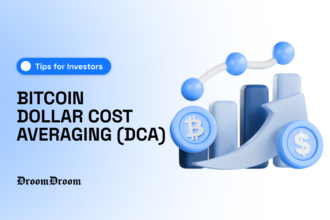As developers launch new crypto projects, traders need crypto exchanges to carry out convenient transactions more than ever. These crypto exchanges are built to allow investors to buy, sell, and exchange their digital assets.
The two types of crypto exchanges are centralized (CEX) and decentralized exchanges (DEX). Centralized exchanges are traditional platforms where a central entity manages transactions, while decentralized exchanges operate on blockchain technology, eliminating possible third-party interference.
While some crypto users trade on centralized exchanges, others prefer decentralized platforms. This is because each exchange type has its disadvantages and benefits over the other.
In this article, you shall learn more about centralized and decentralized exchanges to assist in decision-making.
Overview of Centralized and Decentralized Exchanges

The table below summarizes the differences between centralized and decentralized exchanges, which are explained in details as you read further.
| Centralized Exchanges (CEX) | Decentralized Exchanges (DEX) |
| Managed by crypto entities. | Lacks entity or management body. |
| Heightened security | Less secured |
| Compromises users’ privacy. | Preserves users privacy. |
| Higher liquidity due to entities’ control over order books. | Lower liquidity due to low transaction rate. |
| User-friendly interface. | Interface is more technical. |
| Provides adequate customer service. | Inadequate customer service operations. |
| Incurs high transaction fees. | Incurs lower transaction fees. |
| Subject to strict regulatory requirements. | Not subject to any legal requirements. |
What is a Centralized Crypto Exchange?
Centralized crypto exchanges imply the presence of a middleman between buyers and sellers who trade cryptocurrencies.
This is a popular mode of exchange within the crypto community, especially among beginners. However, the central entity often has specific terms and conditions to ensure fair treatment among buyers and sellers.
Common examples of centralized exchanges are:
- Binance
- Coinbase
- Kraken
- Gemini
- Bitfinex
- Huobi Global
- GDAX
How Centralized Crypto Exchanges Work
Some certain features or characteristics make centralized crypto exchanges unique. Foremost, centralized exchanges hold users’ private keys, which is a critical element for crypto transactions.
- Know Your Customer (KYC): Centralized exchanges mandate users to follow the Know Your Customer (KYC) process before being allowed to carry out transactions on the platform. This process usually involves identity verification and compliance with regulatory requirements. Users are then requested to submit necessary verification documentation to curb illegal activities.
You may read this article to learn more about Know Your Customer and its importance.
- Order book system: Many centralized exchanges establish an order book system that helps users understand the market prices between buyers and sellers. As a result, the order book is employed as a matchmaking service to help pair the right buyer and seller together. This also helps beginners to understand the ongoing market competition and price fluctuation.
Advantages of Centralized Exchanges
Centralized exchanges offer several benefits to users, which are further highlighted below.
Easy-to-use Interface
As mentioned earlier, centralized exchanges are common among crypto beginners due to the user-friendly interface. You can deposit and withdraw your crypto effortlessly without any technical requirements. Due to its simplicity, about 75% of trading volume is carried out on centralized exchanges.
Wide Range of Crypto Trading
Most centralized exchanges support a wide range of cryptocurrencies – this is an excellent opportunity for users who would love to boost their investment portfolios.
High Liquidity
In terms of liquidity, centralized exchanges offer more advantages than decentralized exchanges. A liquid market is when crypto traders can exchange their assets with ease. This is crucial for users who want to transact at a low volatility rate.
The high liquidity rate at CEX can be attributed to the presence of market makers and an extensive pool of buyers and sellers. Additionally, trading asset derivatives, such as options and futures, causes a high liquidity effect on centralized exchanges.
Maximum Regulatory Compliance
Institutional investors and professional traders who deal with a wide range of cryptocurrencies trust centralized exchanges better. This is because the entities at centralized exchanges ensure a high degree of regulations are met at every point in time.
Disadvantages of Centralized Exchanges
Even though centralized exchanges offer some juicy benefits, they also have certain setbacks. These disadvantages are further discussed below.
Lack of Control for Crypto Users
Since centralized exchanges give users no access to their wallet keys, it prevents them from directly controlling their crypto assets. As a result, users risk losing massive assets if the exchange platform suddenly shuts down.
Exposure to Cyber Attacks
There is a high-security threat in centralized exchanges, compromising users’ digital assets. Over the years, crypto traders have kept losing millions of Dollars to cyber attacks. For instance, crypto.com lost $35 million in January 2022.
What is a Decentralized Crypto Exchange?
Unlike centralized exchanges, decentralized exchanges have no intermediary entity. They are built on smart contracts in public blockchains like Solana or Ethereum. One of the main ideas of decentralized crypto exchange is to foster peer-to-peer transactions.
Common examples of decentralized exchanges are:
- PancakeSwap
- Uniswap
- dYdX
- Curve
- Maker PSM
- Kyber Swap
- Balancer
Check here for the top decentralized exchanges to watch out for in 2023.
How Decentralized Crypto Exchanges Work
Unlike centralized exchanges, decentralized exchanges do not require users to pass through the Know Your Customer (KYC) process. This implies that all transactions or activities are carried out anonymously.
Read this article for possible crypto exchanges without KYC to look out for.
Automated Market Maker Algorithm
The automated marker maker algorithm is a technique introduced by Uniswap, eliminating the use of order books.
This is because order books have been found not to yield sufficient liquidity if there are not many buy and sell orders on the decentralized exchange platform.
Thus, Decentralized Finance exchanges introduced the automated market maker algorithm to solve the challenges of using order books.
Instead of trading against one another, users trade against a liquidity pool – this algorithm model is based on a mathematical formula.
People who belong to the governance system can then deposit some tokens into the liquidity pool. This set of governance users is also called Liquidity Providers.
3/ The AMM algorithm uses a mathematical formula to determine the price of assets in the pool based on the supply and demand. This allows users to trade assets in the pool without the need for an order book.
— Alp.Web3 (@alp_ortancil) February 7, 2023Advantages of Decentralized Exchanges
The common benefits of decentralized exchanges are discussed below.
Permissionless
Almost anyone can use a decentralized exchange as long as there is an active internet connection. Thus, there is no location discrimination, unlike centralized exchanges. More importantly, this feature attracts users who love to trade anonymously.
Lending and Borrowing System
The Decentralized Finance platforms provide a lending and borrowing system where users anticipate a certain percentage of interest for lending out their funds.
This article published by DroomDroom explains in details crypto lending, and how they work.
Heightened Transparency
On decentralized exchanges, users can access their transaction history. This helps them to track their trading activities and identify their success score.
Low Transaction Fee
Since decentralized exchanges have no intermediary entity, the transaction fee is lower than in centralized exchanges.
Disadvantages of Decentralized Exchanges
Decentralized exchanges have certain setbacks, which are responsible for lower adoption than in centralized exchanges.
Low Liquidity Value
Even though developers are implementing measures to solve the low liquidity value of decentralized exchanges, the absence of a large user base remains a hindering factor. This can lead to rapid deviation from the crypto average market price, often causing unfavorable trading conditions for buyers and sellers.
Poor Users Experience
Decentralized exchanges often require some technical knowledge about blockchain. For instance, users are solely responsible for managing their private keys and getting a suitable wallet. This makes DEX a less preferable option for crypto beginners.
Limit on Token Support
Since decentralized exchanges are built on-chain, users must purchase native tokens the same as the operating chains. This can cause significant errors, especially for users who are just getting started with cryptocurrency.
You can learn about the role of on-chain transactions in this article.
Heightened Illegal Activities
Illegal activities like money laundering are more prevalent on decentralized exchanges since they don’t require regulatory compliance. This also discourages established companies that may want to invest in cryptocurrency.
Conclusion
Although there are distinct differences between centralized and decentralized exchanges, technological advancements will continually shape the future of these platforms. As cryptocurrency adoption keeps rising, developers will continually enhance exchanges usability and boost investors’ confidence. We also believe crypto traders will have a vast option of crypto exchanges in the near future.




















